Diving through time
South Australia’s flooded caves hide a rich megafauna history. Scroll to explore
Published:
Between Victoria’s Great Ocean Road and South Australia’s Coonawarra lies a series of hidden underwater caves.
Largely undisturbed, for tens of thousands of years these caves have preserved the bones of extinct megafauna. Many of the fossils are so well preserved, they are perfect for investigating the mystery of the animals’ extinctions.
But reaching them is no ordinary feat. The fossils lie in deep, intricate, and sometimes very long underwater caves dotted along the Limestone Coast.
The caves sit beneath farms, roads and even the bustling city centre of Mount Gambier.

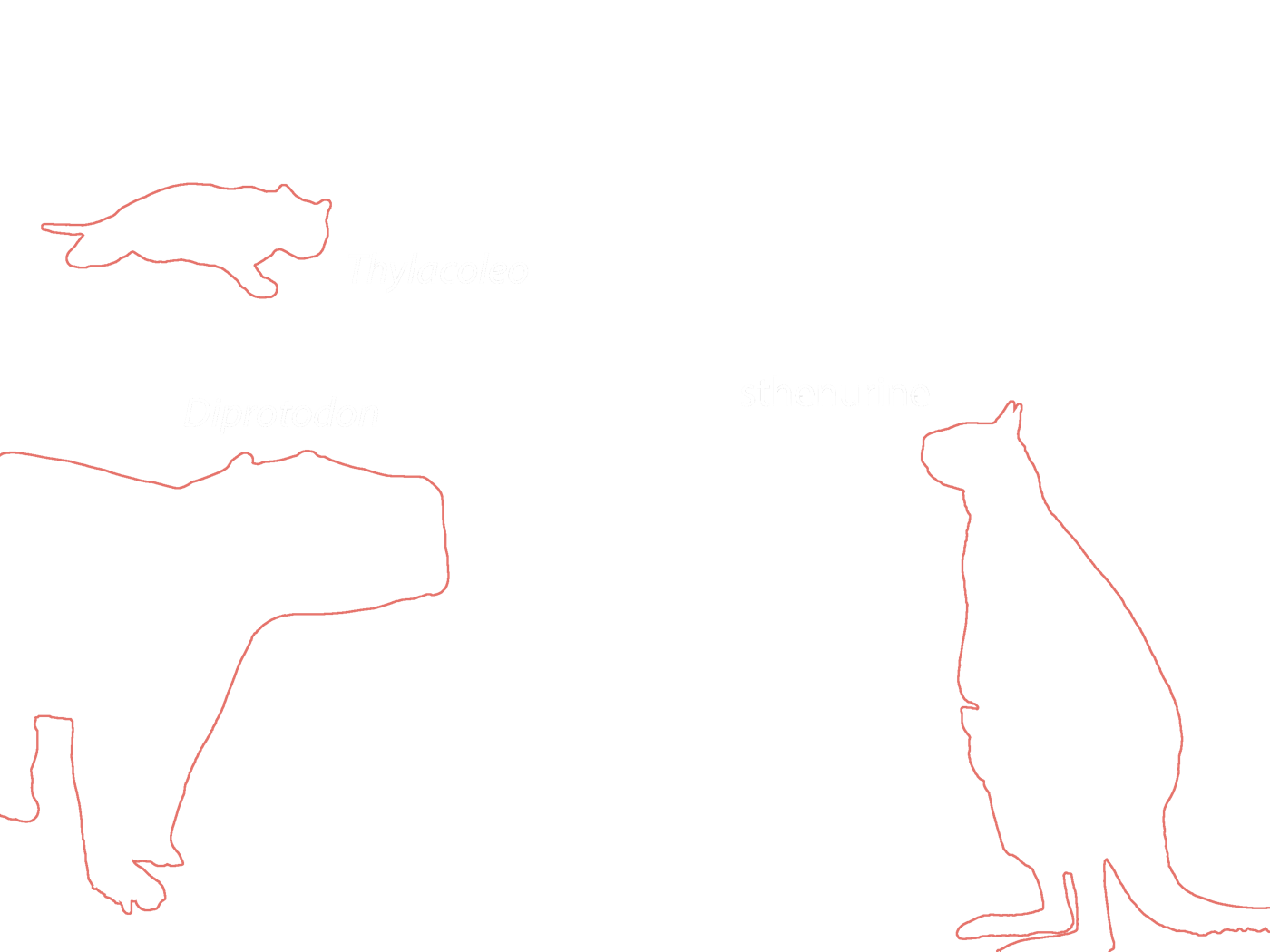
Long ago, animals may have used these caves to shelter from the elements, or as a place to find water in the dry Australian climate.
This area was once home to giant wombat-like marsupials known as Diprotodon, marsupial lions called Thylacoleo, and short-faced kangaroos called sthenurines that only had one toe on each foot.
We teamed up with experienced cave divers to help us investigate why these giant marsupials became extinct.
Over several expeditions, we’ve been building a picture of the sorts of species preserved underwater, and how they could have got there.
Scientists and cave divers exchanging expertise
Cave diving is not for the fainthearted. All diving can be dangerous, but cave diving adds another level of risk.
You must have three light sources and a guideline to the surface, and you have to take care to manage your depth and air supply.
Experienced divers from the Cave Divers Association of Australia shared techniques developed over 50 years of exploring these caves.
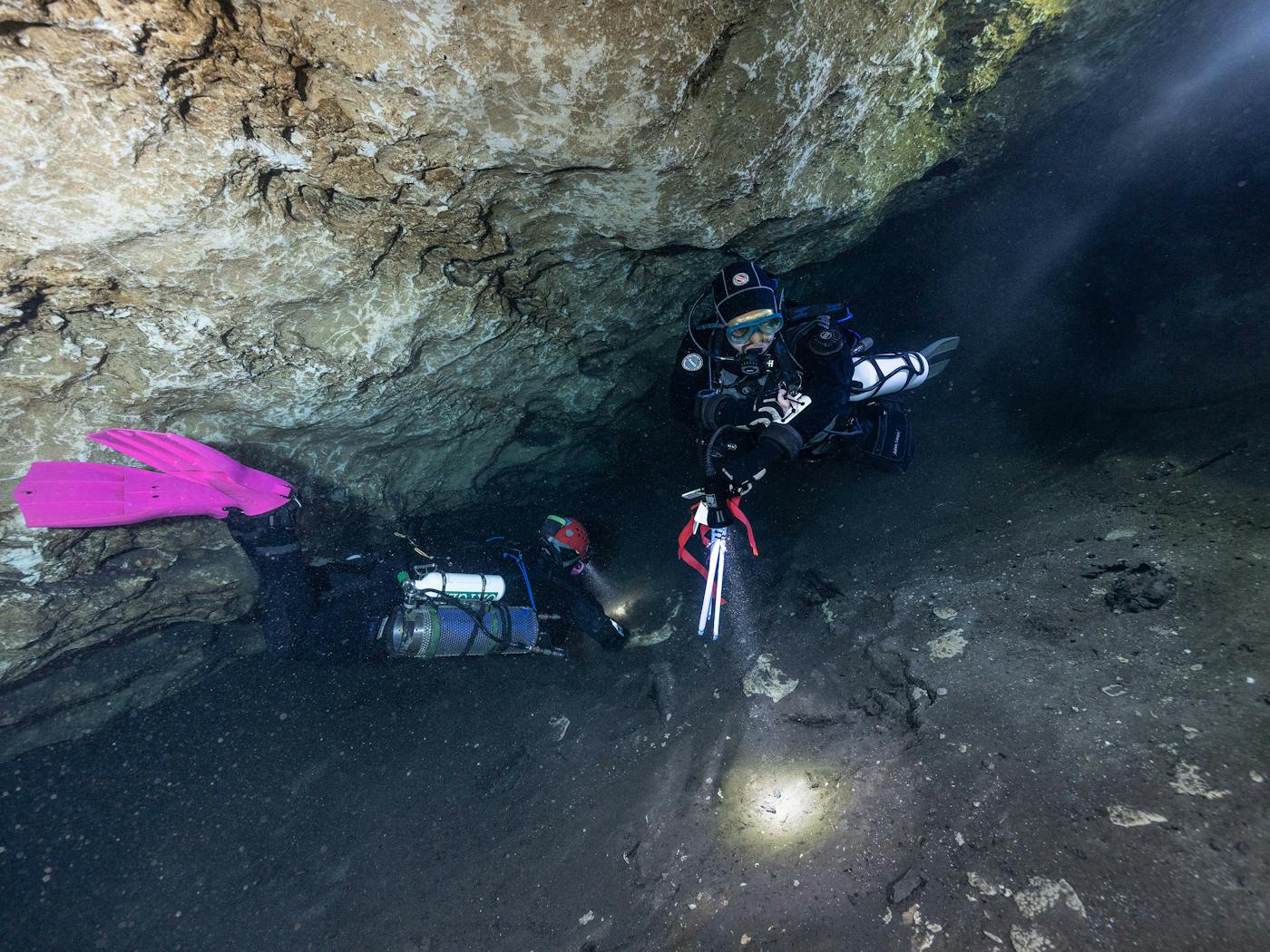
These expert cave divers were the first to find many of the fossils we are currently researching.
They taught our research team how to dive safely in this environment.
The challenge of diving for fossils in an underwater cave is unique. The techniques we’ve developed are the first of their kind.
Collecting samples in an underwater environment without losing information poses a technical challenge.
Underwater science
We are recording and collecting fossils through narrow underwater passages, some over a kilometre long.
The typical equipment we might use in dry caves, or even in underwater archaeology, is simply not feasible here.
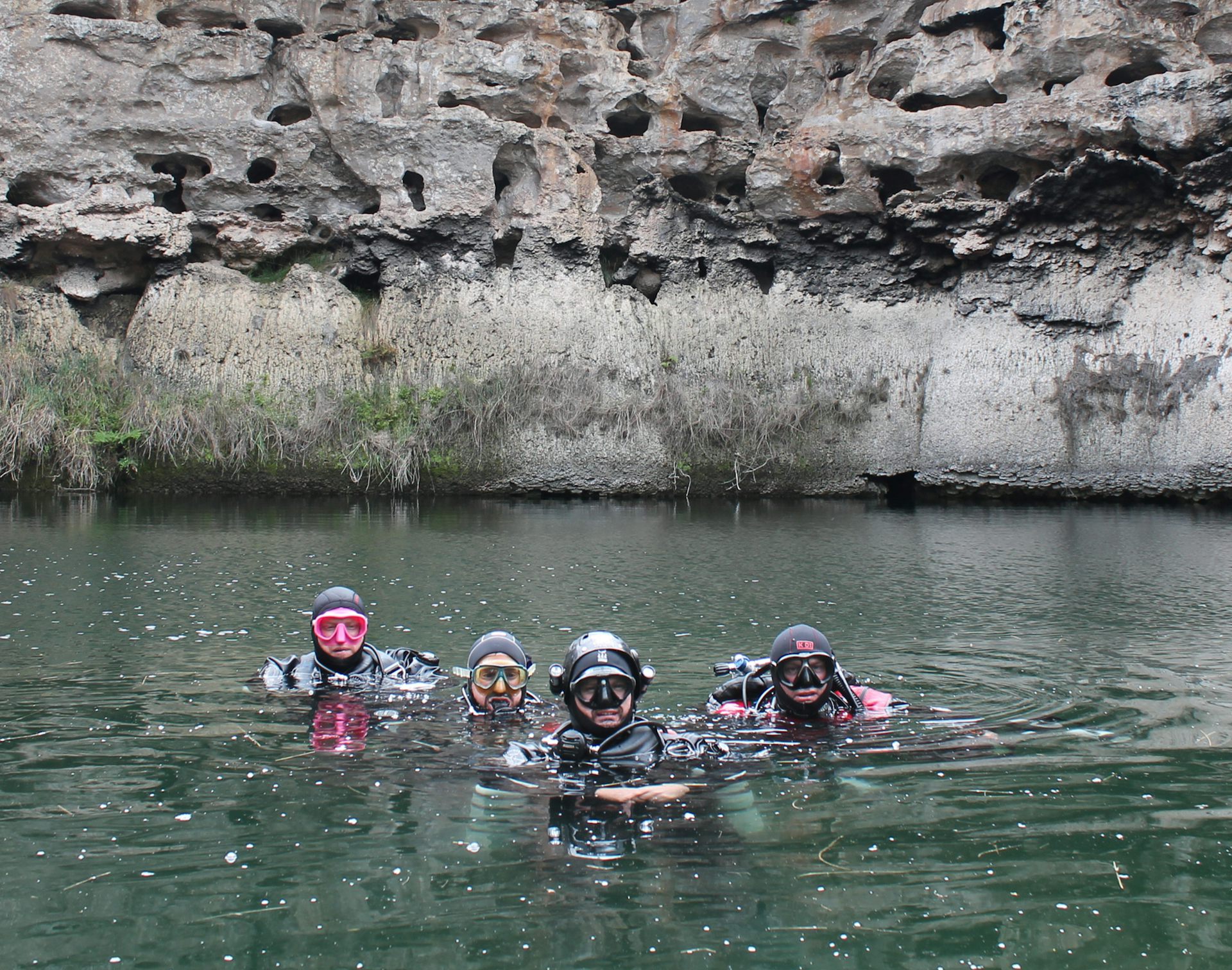
So, we have retrofitted every collection technique. Our tools must travel safely on a diver into the caves, and then work underwater.
Good teamwork, sharing tasks, and a clear plan are essential for success as we can’t talk to each other while diving, and can only carry a limited amount of field gear.
Identifying and recording where the fossils are before they are recovered is critical, but it is slow going.
We use 3D recording to map the whole cave before we lift the fossils out.
We must also be careful not to damage the remains as they leave their underwater bone bed.
With samples of their surrounding material, we can accurately date the fossils. We can also catch a glimpse of the environments of the past.
A unique geological archive
The Limestone Coast is riddled with sinkholes, underground tunnels and caverns. These spaces are etched out as groundwater moves through and dissolves the spongy, porous limestone rock that makes up this region.
As the caves grow and become unstable, they collapse and may open up to the surface. They also have a unique relationship with groundwater.
As Earth has cycled through ice ages and warmer periods, sea levels and groundwater levels have fluctuated in response to the melt and freeze of glaciers. In response, the caves too would either dry out or become flooded.
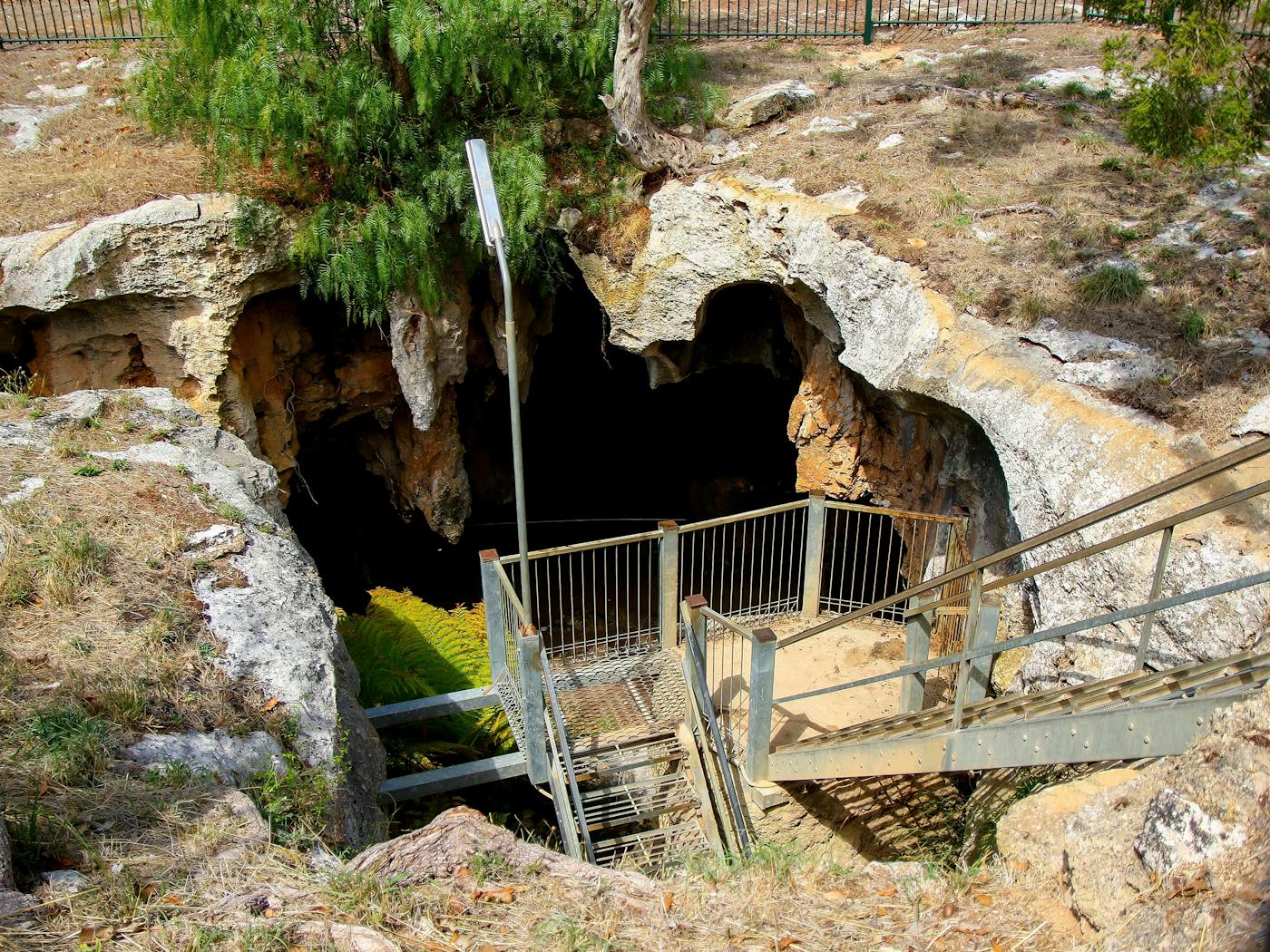
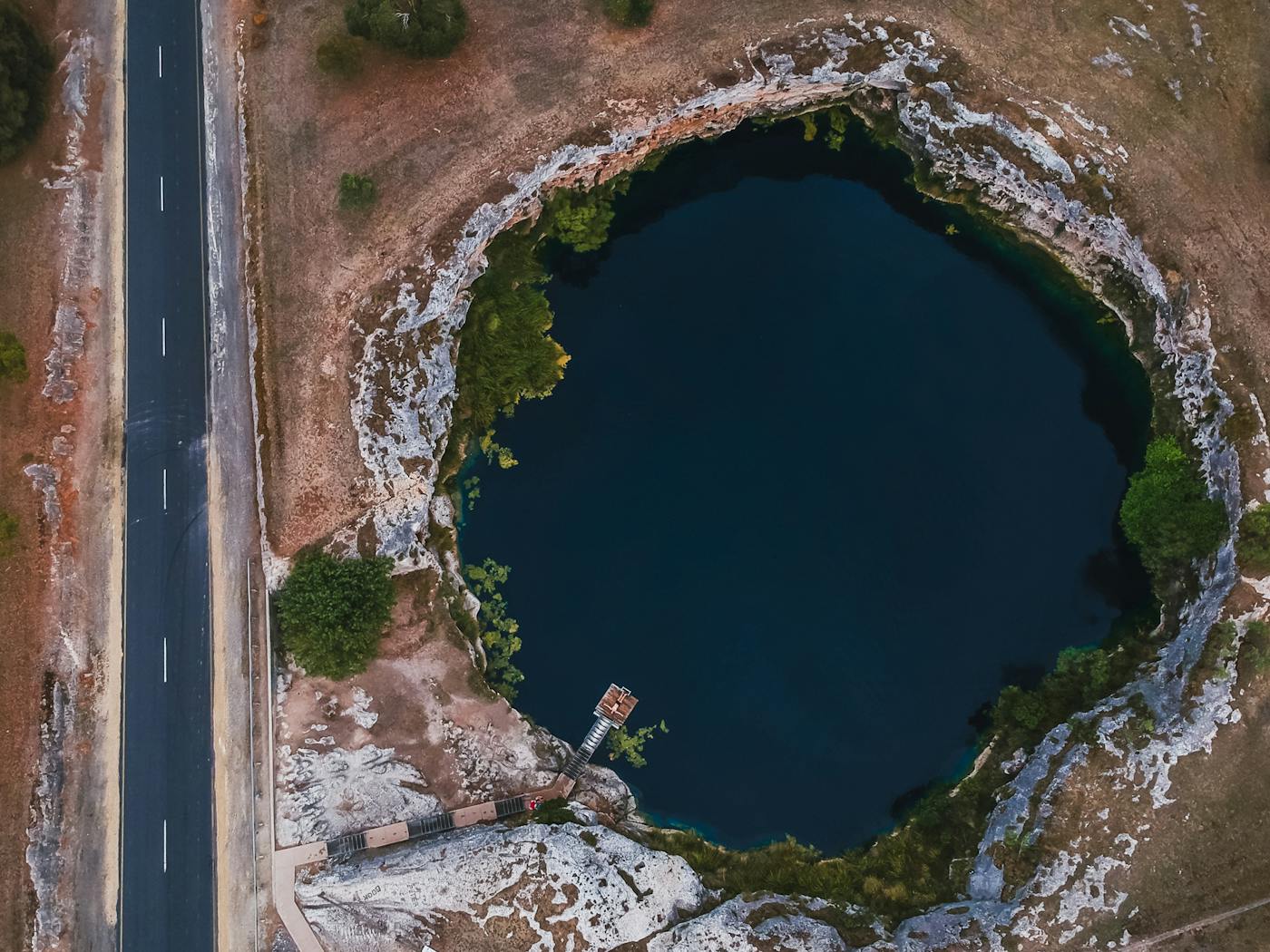
- caves
As the environment shifted, the height of the water in the caves would change how they were used or occupied.
Over time, soils and debris have moved into these caves, including animal remains.
If we can understand what the caves looked like when the animals died, we can start reconstructing the local environments of the fossils we find.
To date, we have discovered fossils in the Tank Cave system, in the iconic Engelbrecht Cave system underneath the urban centre of Mount Gambier, and in Gouldens Sinkhole, a well-known training area for divers.
Exciting bones
Divers in the 1970s and 80s found some megafauna bones in these cave systems. But with new methods and diving technology, we can now reach the important information surrounding the bones, too.
Since 2022, our research team has started systematic work to recover megafauna fossils from the caves, with minimal loss of scientific information.
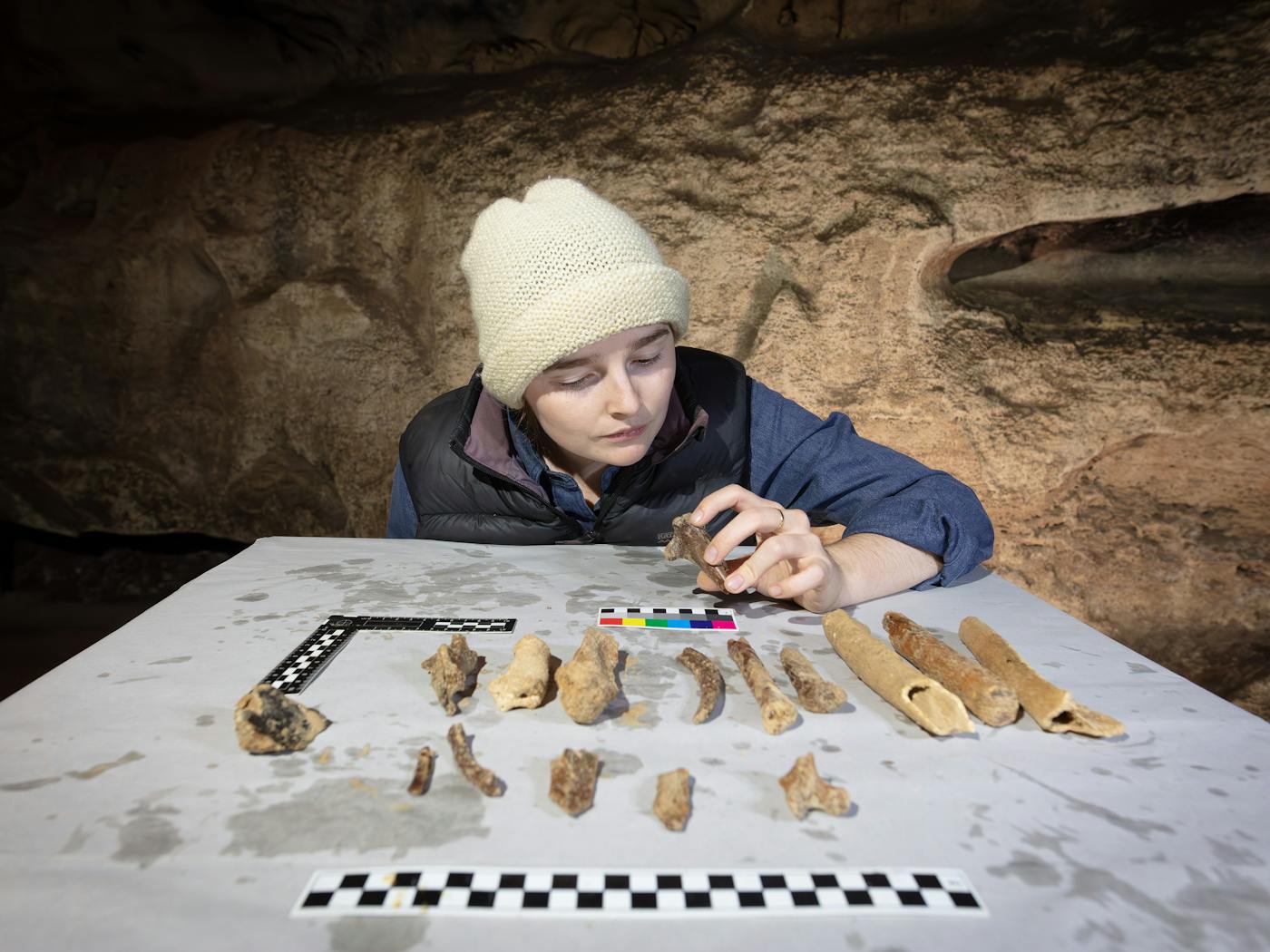
Our initial investigations have yielded skulls and other bones from small marsupials, megafauna, dingoes, and even a sheep or two.
The bone beds have a long history of collecting animals, and this continues even today.
Fossils that can be identified to a species are the most exciting – they tell us which animals once lived in the area.
Here, we have the jaw of a short-faced kangaroo that roamed Australia for millions of years, before becoming extinct around 40,000 years ago.
However, our research is exploring all the bones, even those we can’t identify.
They can provide clues about what it was like in the caves, and how past climate change affected the animals.
What’s next?
The enduring riddle of how Australian megafauna went extinct will probably never be settled. But our fossil research is adding a piece to the puzzle that has never been considered before – not least because we couldn’t access it.
Exploring these caves is about pushing the limits of our field. The techniques we’ve developed can be applied elsewhere in the world where amazing underwater fossils lie in wait.
Our work will also help future divers understand the importance and heritage of the underwater landscapes they explore.
The caves are a spectacular, wonderful resource and we must help preserve them while carefully bringing their secrets to the surface.